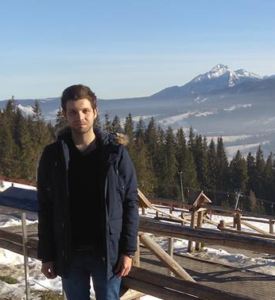ESR 12 – Saif HADJ SASSI
About the ESR
Greetings, everyone! I’m Saif, a highly accomplished professional in the field of technology. I hold a bachelor’s degree in Computer Science and Multimedia, as well as a research master’s degree in Enterprise Systems Engineering (ESE) from the University of Sfax. I also had the privilege of participating in an exchange program at the University of Messina (Italy) and the Lublin University of Technology (Poland), broadening my academic horizons. With distinctive academic achievements and hands-on experience in diverse research areas, I’ve undertaken internships with national and international companies. Additionally, I’ve published in internationally renowned conferences. Moreover, my linguistic versatility extends beyond English.
About the project
The ImmerSAFE project will give me the opportunity to work in a diverse multi-disciplinary environment with various universities, companies, and a team of scientists with different backgrounds from many different countries around Europe. This leads to sharing experiences and knowledge in order to rise in creative, collaborative problem-solving. In addition, being a part of research projects in Leonardo company will provide lots of opportunities to acquire new skills to understand both industrial and technological methods.
Status of the project
Head-mounted displays and see-through displays are still in the early stages of development in the realm of augmented and virtual reality. IVT technology provides certain potential advantages that can help industrial workers, patients and different users from all sectors performing their tasks more efficiently, quickly, and safely. In this context, we define 5 objectives as descripted in the following milestones:
First milestone MS19 – Applicability of IVT in control centre environment is achieved:
1- Simulation-based virtual reality training for firefighters [1];
2- A new model for cognitive IVT based on loT for critical safety solutions: firefighter use case [2];
Second milestone MS19 – New system operating procedure using IVT is achieved:
3- Virtual reality for shoulder rehabilitation: accuracy evaluation of oculus Quest 2 [4][6];
4- Visual perceptions in VR based on reaction time and FOV restriction on cybersickness [3];
5- Virtual reality for a rehabilitation system [5].
Publications
[1] Sassi, M. S. H., Battisti, F., & Carli, M. (2022). Simulation-based virtual reality training for firefighters. Electronic Imaging, 34, 1-5.
[2] Sassi, M. S. H., Saghafian, M., Battisti, F., & Carli, M. (2022, March). A New Model for Cognitive IVT based on loT for Critical Safety Solutions: Firefighter Use Case. In 2022 IEEE Conference on Virtual Reality and 3D User Interfaces Abstracts and Workshops (VRW) (pp. 381-386). IEEE.
[3] Baldoni S, Hadj Sassi MS, Carli M, Battisti F. Definition of guidelines for virtual reality application design based on visual attention. Multimedia Tools and Applications. 2023 Nov 3:1-26.
[4] Longo UG, Carnevale A, Andreoli F, Mannocchi I, Bravi M, Sassi MS, Santacaterina F, Carli M, Schena E, Papalia R. Immersive virtual reality for shoulder rehabilitation: evaluation of a physical therapy program executed with oculus quest 2. BMC Musculoskeletal Disorders. 2023 Nov 2;24(1):859.
[5] Carnevale A, Mannocchi I, Schena E, Carli M, Sassi MS, Marino M, Longo UG. Performance Evaluation of an Immersive Virtual Reality Application for Rehabilitation after Arthroscopic Rotator Cuff Repair. Bioengineering. 2023 Nov 10;10(11):1305.
[6] Carnevale, A., Mannocchi, I., Sassi, M. S. H., Carli, M., De Luca, G., Longo, U. G., … & Schena, E. (2022). Virtual Reality for Shoulder Rehabilitation: Accuracy Evaluation of Oculus Quest 2. Sensors, 22(15), 5511.


 This project has received funding from the European Union’s Horizon 2020 research and innovation programme under the Marie Sklodowska-Curie grant agreement No 764951.
This project has received funding from the European Union’s Horizon 2020 research and innovation programme under the Marie Sklodowska-Curie grant agreement No 764951.